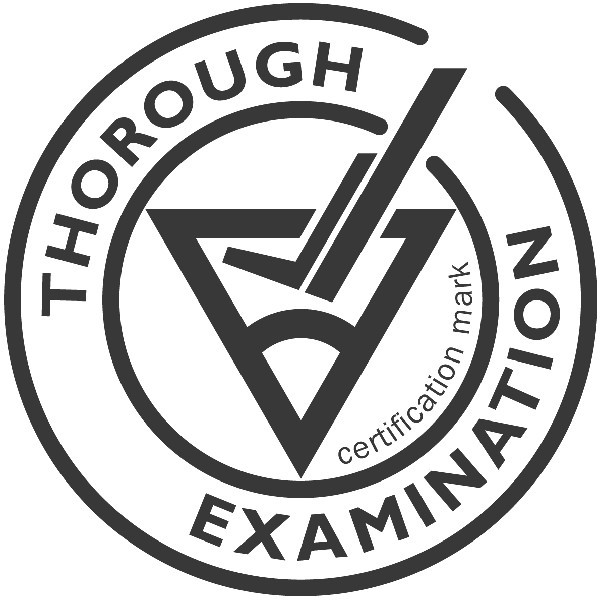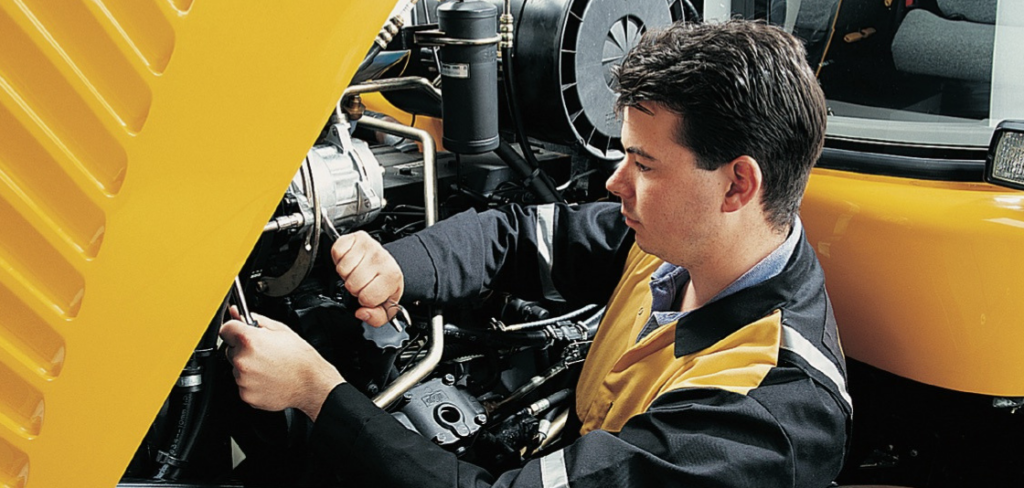For 2021, National Forklift Safety Day is focussed on the importance of accredited Thorough Examination. Alongside the campaign is the publication of an updated BITA GN28 guidance note – the industry approved guideline on Thorough Examination and Safety Inspection of Industrial Lift Trucks in accordance with the provisions of LOLER (Lifting Operations and Lifting Equipment Regulations) 1998 and PUWER (Provision and Use of Work Equipment Regulations) 1998.
As the material handling industry emerges from effects of a series of COVID-19 lockdowns, companies reliant on material handling equipment (MHE) must ensure their MHE is in good condition with no dangerous defects or deterioration.
If MHE has been idle during lockdown, then management has a responsibility to ensure it is safely recommissioned and the best way of ensuring this is to have the equipment examined by a suitably qualified competent person.
For more information on Thorough Examination, click here
For a fuller explanation of LOLER & PUWER, click here
Best practice is to put MHE through a Consolidated Fork Truck Services (CFTS) inspection known as Thorough Examination.
UKMHA recommends that all Thorough Examinations should be completed by a CFTS-accredited Competent Person. The CFTS mark is a guarantee that a lift truck will be examined carefully, and that key components such as brakes and steering will also be checked along with the lifting mechanism.
All lifting equipment must receive a Thorough Examination at least once a year. However, examinations could be required more often depending on the type of truck and the application.

The process of Thorough Examination is governed by regulations enforced by the Health and Safety Executive (HSE). Thorough Examination of industrial lift trucks is required under LOLER 1998, which covers lifting equipment, and safety inspections of other safety-related items, such as brakes, steering and tyres, are required under PUWER 1998.
It is important to highlight that regular inspections as part of a preventive maintenance scheme or scheduled service do not meet the legal requirements for a Thorough Examination. Thorough Examinations can only be carried out by people deemed competent, and these people are under a legal obligation to report dangerous defects to the authorities.
For more information on the HSE’s guide to the safe use of lifting equipment, click here
Persons carrying out examinations require sufficient and appropriate training in the basic operation of the truck they are examining. For example, while they are not required to stack, or operate in aisles or around trailers, but they do need to manoeuvre the truck and raise a load.
Competent Persons must have sufficient knowledge and experience of the lifting equipment to enable them to detect and assess defects relating to the safety and continued use of the lifting equipment. In addition, they need to understand the law relating to LOLER and Thorough Examination. Training and revalidation for Competent Persons carrying out Thorough Examination is available through FLTA.
It is crucial to ensure that individual Thorough Examinations comprehensively cover both the lifting and the driving mechanisms of the truck, because not all of them do. Some examinations only cover LOLER, which could put equipment, operators and businesses at risk.
In addition, the Health and Safety at Work Act 1974 gives every employer a duty of care to their employees and any truck that has not had its brakes, steering or structural integrity checked is not considered safe.
For a list of accredited CFTS examiners, click here
For more information on training for Competent Persons, click here
The Competent Person (CP) carrying out the Thorough Examination is under a legal duty under LOLER to report any defects in the lifting equipment involving an existing or imminent risk of serious personal injury to the relevant enforcing authority.
Generally, the relevant Enforcement Authority (rEA) will be the HSE for all lease and rental trucks, and for factories and manufacturing sites, or will be the Local Authority for retail, warehousing and distribution sites (except for lease and rental trucks).
Reporting to rEA is mandatory, even if the remedial work has already been completed. Follow up by the EA varies, but may include a request for evidence that remedial work has been completed.
The CP is not responsible for ensuring that remedial work is carried out, however, where the repair is substantial a further Thorough Examination may be required before the machine is returned to service.
For further information on your nearest HSE, click here
The Local Authority contact will usually be the environmental health department of the applicable unitary authority or district council.
To search for the applicable Local Authority nearest to you, click here
BITA Guidance Note 28 (GN28) is the industry approved guideline on Thorough Examination and Safety Inspection of Industrial Lift Trucks in accordance with the provisions of LOLER & PUWER.
The updated GN28, which is available free to members of BITA and FLTA, incorporates several changes to the current guidelines, including:

What is BITA GN28?
GN28 is guidance produced by the industry on how to comply with the legal obligations for Thorough Examination (LOLER ) and Safety Inspections (PUWER ) for industrial and rough-terrain lift trucks including variable-reach trucks (telehandlers).
What is the purpose of a Thorough Examination and Safety Inspection (TE&SI)?
TE&SI is intended to:
Do pallet trucks require TE&SI?
Low lift pallet trucks, which only raise the load sufficiently for it to be moved across a flat floor, do not require TE under LOLER. Generally, this is taken to include non-stacking powered and manual trucks with forks or load platform that lift to not more than 300 mm from the ground. They do, however, require periodic safety inspections in accordance with PUWER and therefore fall within the scope of GN28. However, if the equipment lifts more than 300 mm from the ground it will require TE under LOLER.
Where can I get a copy of BITA GN28?
GN28 is free to BITA and FLTA members, it can also be purchased from the BITA webstore.
The law has not changed. The Guidance has been updated to clarify:
What other sources of information are available?
The European Materials Handling Federation (FEM) has published guidance on Periodic Inspection (FEM 4.004), however, whilst many of the technical recommendations are similar, it does not address UK legislation.
What is the HSE guidance?
The HSE Approved Code of Practice on the Safe use of lifting equipment: Lifting Operations and Lifting Equipment Regulations 1998 (HSE L113) provides general information on LOLER, but does not detail the specific inspection requirements for lift trucks. The HSE Approved Code of Practice on the Safe use of work equipment: Provision and Use of Work Equipment Regulations 1998 (HSE L22) provides general information on PUWER.
How can I find a Competent Person to carry out TE&SI?
CFTS is the industry body set up for the accreditation of examiners and inspections companies. It maintains a list of members.